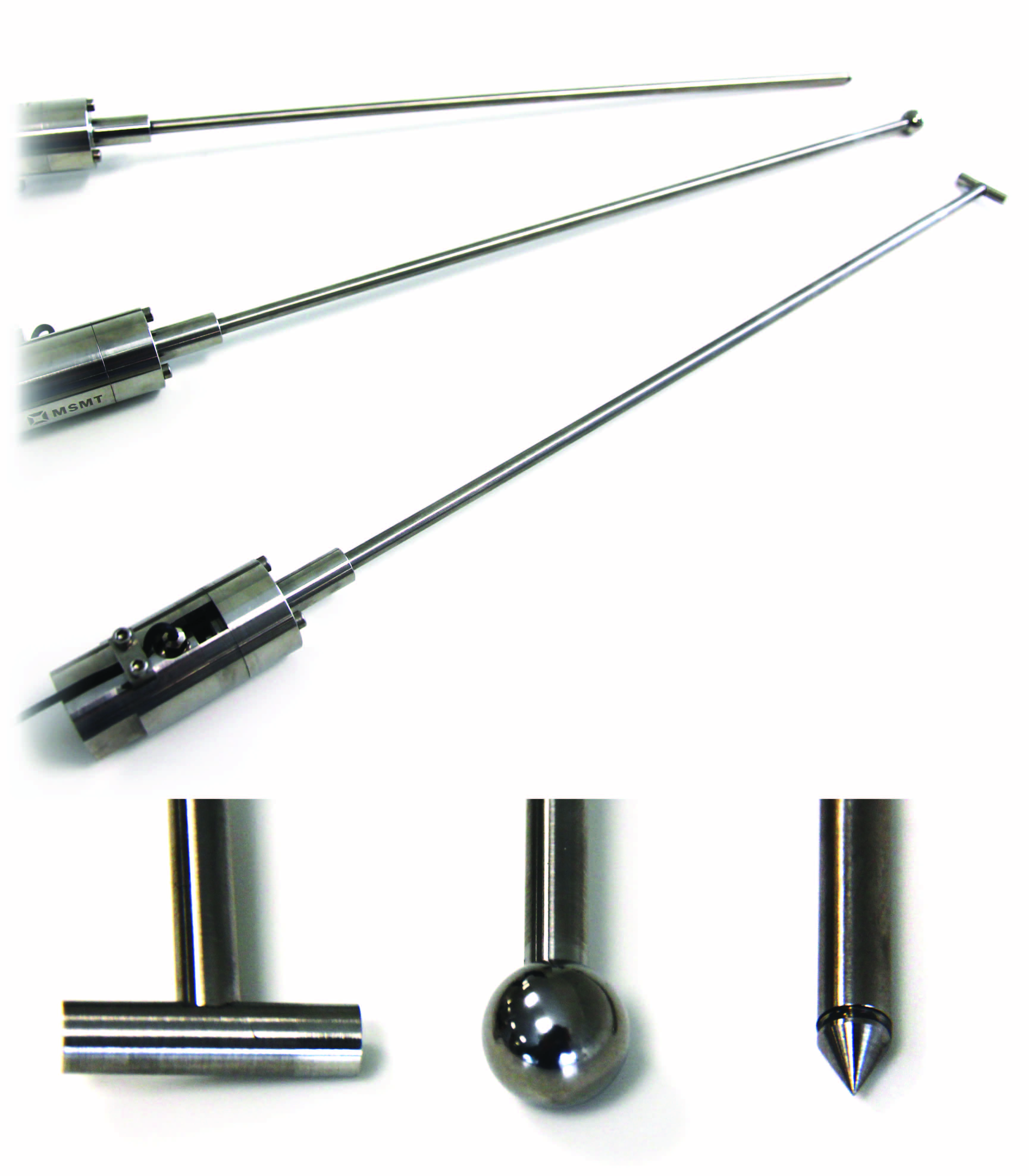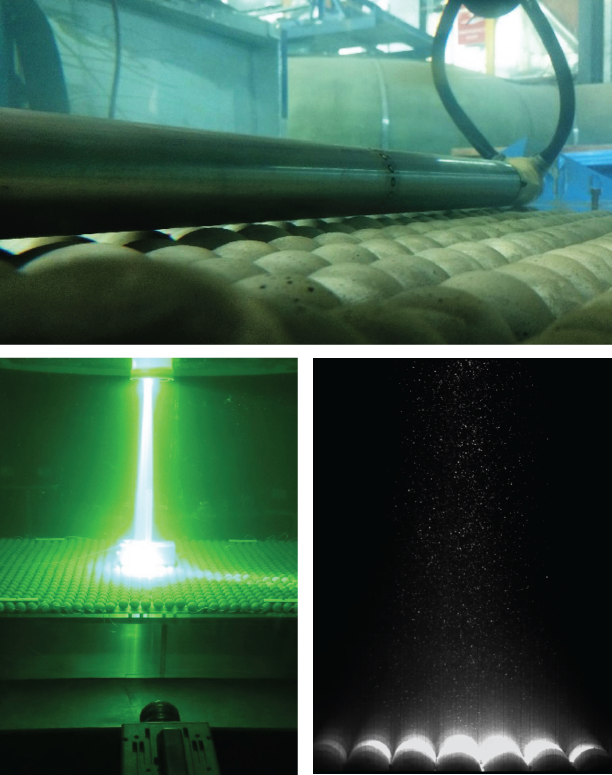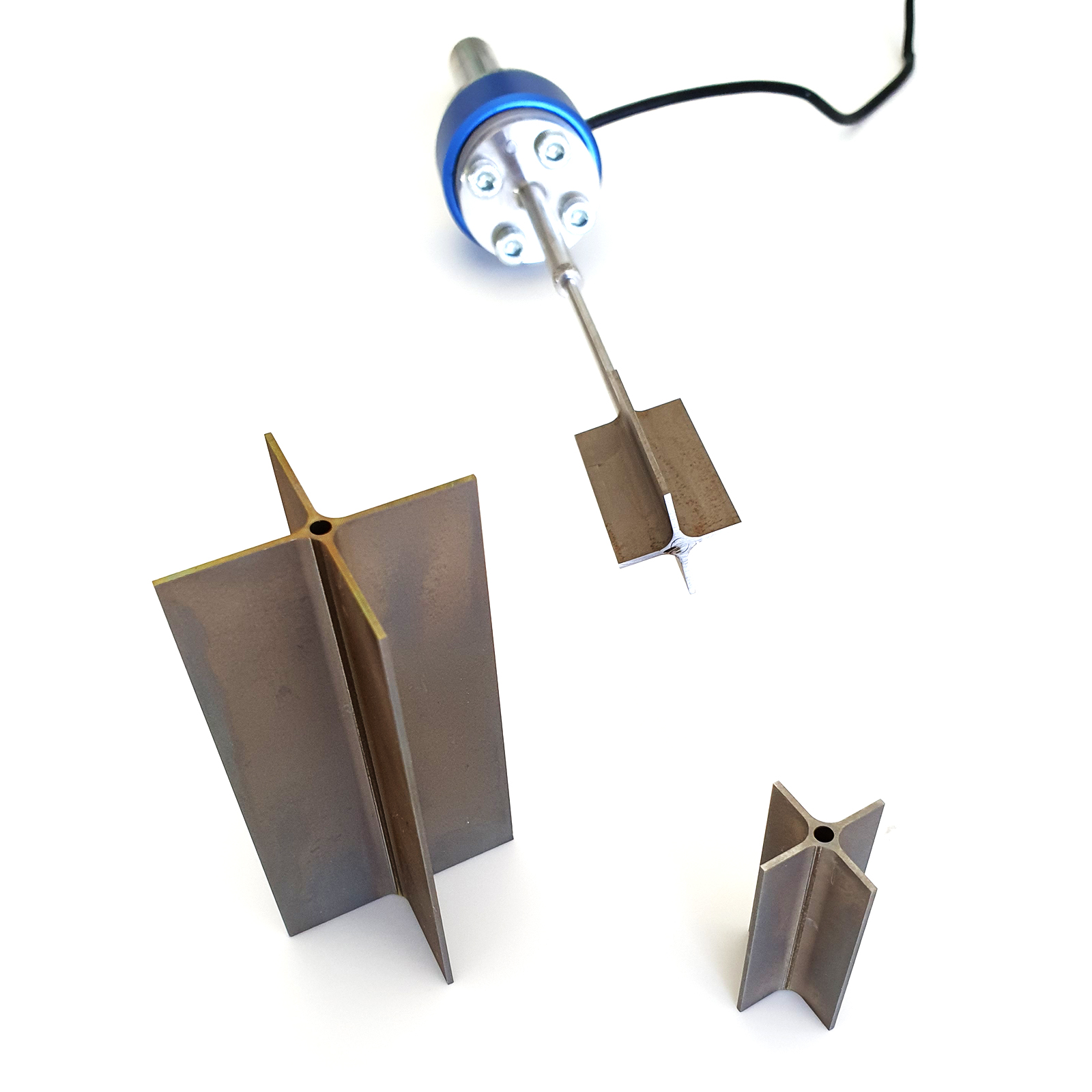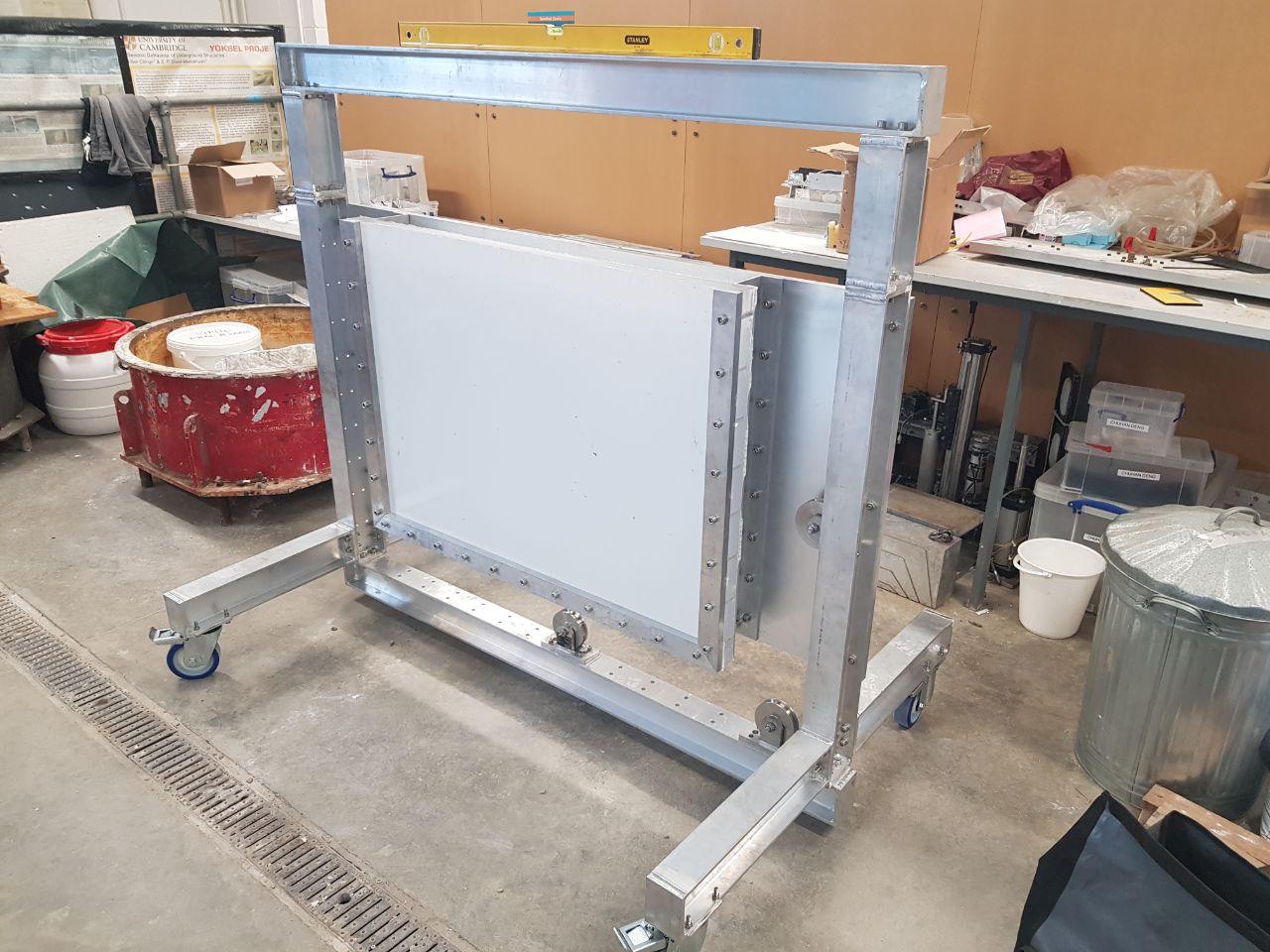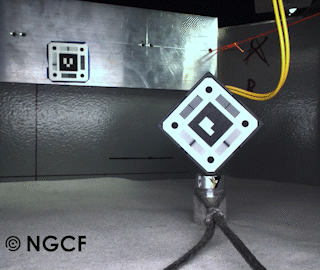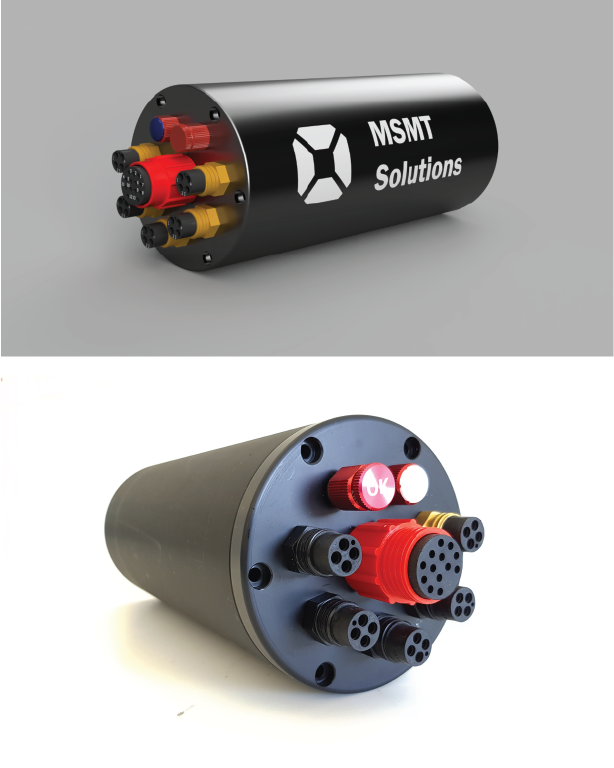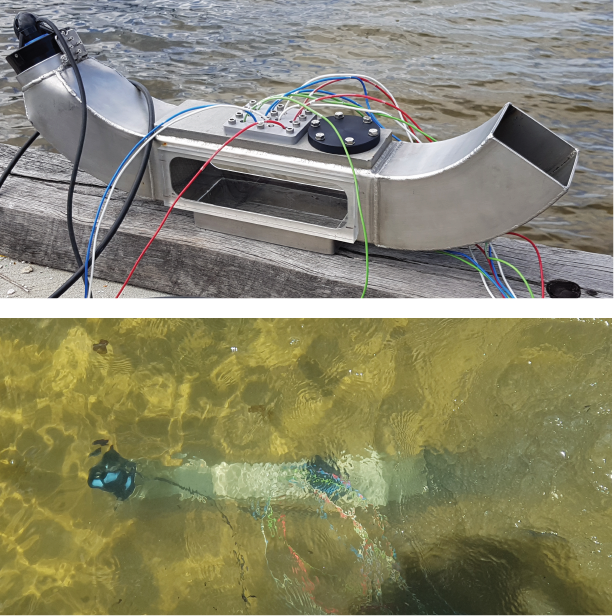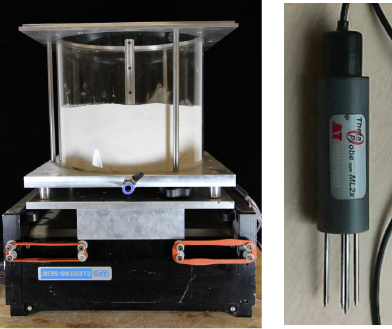Design and manufacture of miniature penetrometers
MSMT Solutions designed miniature scaled versions of traditional cone, ball and T-bar penetrometers. Easily attachable to any actuator, they deliver high-resolution shear strength profiles. The penetrometers have replaceable top load cells and have interchangeable parts.
Publications:
Instrumentation of model pipe to measure hydrodynamic forces
MSMT Solutions instrumented a model pipe for the University of Western Australia to record hydrodynamic forces on small pipes near smooth and rough beds. Each end of the model pipe (D = 25 mm) featured a custom made bi-axial load cells to measure the net force on the central section of pipe. A customised bracelet of 16 MSMT pore-pressure transducers were located circumferentially around the model pipe at its mid-span. Additionally, a PIV (Particle Image Velocimetry) system was developed to measure the turbulent boundary layer as well as the flow around the pipe.
Publications:
Design and manufacture of miniature shear vane
The shear vane series has been specifically designed to measure the undrained shear strength of low-strength cohesive soils. Precision manufacturing methods such as lathe turning and wire cutting have been employed to guarantee maximum concentricity during rotation. The shear vane is equipped with a low-torque load cell and accepts interchangeable sizes of vane shear tips. The device has seen extensive use in both research and industry projects.
Design and fabrication of an instrumented model pipe: Investigating failure mechanisms in uplift and lateral dragging of buried pipes in sand
In collaboration with the University of Cambridge, MSMT has developed bespoke model pipes (D = 25 mm and 50 mm) for experiments simulating the uplift and lateral drag of rigid pipes buried in sand. Each pipe incorporates a bi-axial load cell specifically designed to fit within the pipe and handle the expected load range. Extensive structural finite element analyses have been conducted to ensure the integrity of all components.
Design and manufacture of a portable flume to measure erosion properties of sediments
A portable erosion flume has been developed that is capable of estimating erosion threshold and erosion rate relationships for fine-grained specimens over the depth of a typical sample tube. This recirculating flume generates steady currents over the exposed sample section. The sediment’s eroding surface is measured using an ultrasonic transducer array or a 3D laser scanner, enabling the calculation of standard erosion properties like erosion threshold and rate.
Publications:
Development of a test setup to characterise the 6D response of an anchor pile subjected to multi directional loading
This research project comprised the development of geotechnical centrifuge model tests on a monopile anchor subjected to multi-directional loading. Two novel measurement techniques were deployed that fully characterise the 6D response of the pile using (i) a 6D image tracking system to capture pile displacement and rotation in the 6 degrees of freedom and (ii) a fibre optic system to measure bending deformation in any loading direction. The test results offer insight on the foundation response when subject to loading from multiple directions, and hence their efficiency in supporting renewable energy devices organised in an array.
Publications:
Design development of an underwater data acquisition enclosure
This project involves designing a cost-effective underwater data acquisition enclosure capable of live-streaming data from offshore projects. The manufacturing process optimises cost while maintaining reliability and performance. The sub-sea housing, made from high-performance plastic (Acetal), offers strength, stiffness, and enhanced resistance to hydrolysis and corrosion. It’s designed for use up to 100 meters underwater and comes with underwater electrical connectors (Subcon) for 4-channel sensor inputs and an Ethernet power connection, plus a pressure testing port for leak checks before deployment.
Design and manufacture of an in-situ flume to measure erosion properties in the field
An in-situ erosion flume was developed to measure erosion properties in the field. The newly designed flume pumps water through a duct over a specified testing area of the river bed while simultaneously gathering erosion measurements using acoustic sensors. Trial experiments were successfully conducted in the Swan River determining erosion properties of the river bed.
Design of an cylindrical sample container measuring pore pressure and soil densification
A laboratory cell was designed to investigate liquefaction behaviour of fine-grained sediments under shaking motion. The cell features a rack of pore pressure sensors to measure excess pore pressure and several theta-probes to record soil density changes. The sensors were spaced equally through the soil depth allowing to measure the progression of the of the liquefaction process throughout the soil column.
Publications:
